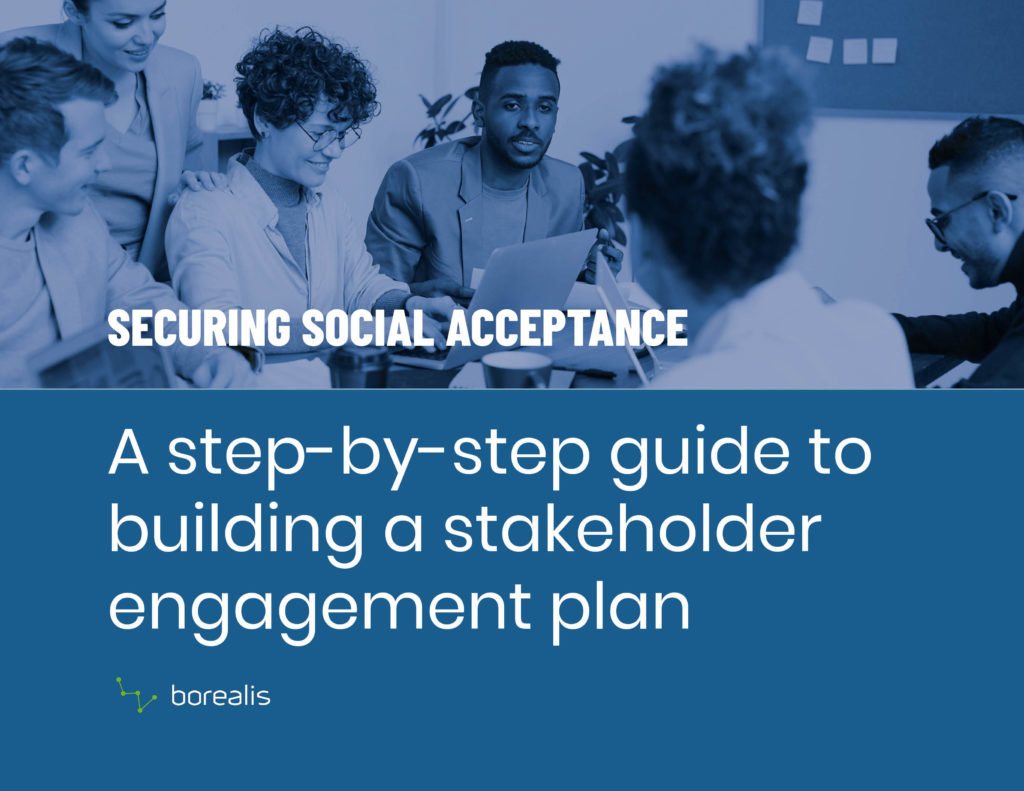Projects thrive on interaction, input, and the collective efforts of all those involved. This is where the art and science of stakeholder engagement in project management come into play, proving to be a critical component for achieving coherence and ensuring the success of any venture. Whether dealing with individuals, groups, or entire organizations, stakeholders hold substantial power to influence the trajectory of a project. Their active involvement, insightful contributions, and constructive feedback are invaluable, steering the project towards its desired outcomes. On the flip side, neglecting stakeholder engagement can lead to resistance, hindering the project’s momentum and potentially leading to its downfall.
This guide aims to delve into the intricacies of stakeholder management, shedding light on its importance, best practices, and essential tools required to master this aspect of project management, ultimately contributing to the project’s success and sustainability.
Who are the stakeholders in project management?
Defining and categorizing stakeholders for better project management
Project managers typically analyze and categorize stakeholders based on their power, interest, or influence over the project. This categorization will help define communication strategies, tailor engagement plans and adjust efforts for each group. The most common stakeholder categories used in project management are:
Direct vs. indirect stakeholders
Direct stakeholders are individuals or groups directly impacted by the project, such as the project team, customers, or suppliers. Indirect stakeholders are individuals or organizations who may be affected by the project but not directly involved, like neighboring communities for a construction project or customers of a company that is implementing a new shipping system and process.
Internal vs. external stakeholders
Internal stakeholders hail from within the organization—team members, managers, or investors. Their insights often align with the company’s overarching objectives. External stakeholders, such as customers, regulators, or local communities, might have diverse perspectives, and their feedback can offer invaluable external viewpoints.
Positive vs. Negative Stakeholders
Positive stakeholders are individuals who would benefit from a project’s success and usually support it. Negative stakeholders are those who perceive potential adverse effects from the project and might oppose or resist it.
The importance of stakeholder engagement in project management
Imagine you’re the conductor of an orchestra. Each musician represents a different stakeholder. Some play the violin, some the trumpet, and others the drums. While each has a unique role and sound, without the conductor’s direction, the music might be discordant. Engaging with each musician ensures that the entire orchestra plays in harmony, producing a masterpiece. Similarly, in project management, stakeholder engagement is the art of orchestrating diverse interests and concerns to achieve a successful project outcome.
Stakeholder engagement in project management is crucial. Here are some of the reasons and examples of how a good project manager would address those stakeholder engagement objectives.
Aligning with expectations
A good project manager should engage adequately with stakeholders to ensure that the project aligns with their expectations, creating a blueprint for success that resonates with all involved parties.
Example: Imagine a software development project where the main client envisions a user-friendly interface with specific functionalities for their application. Without proper stakeholder engagement, the development team might prioritize other features, resulting in a product that doesn’t meet the client’s expectations. Regular meetings and prototype reviews with the client ensure that the project is on the right track, aligning the development process with the client’s vision and expectations.
Fostering trust and collaboration
Engaging stakeholders isn’t just about getting feedback; it’s about building trust. It’s about demonstrating to them that their inputs matter, that you are listening, and that you wish to maintain a collaborative environment.
Example :Consider a community development project aiming to revitalize a local park. Engaging with the local residents, community leaders, and relevant government agencies helps in building trust. By involving them in the planning process, collecting their suggestions, and addressing their concerns, the project manager fosters a collaborative environment. This approach not only ensures that the project outcomes are well-received but also builds a foundation of trust for future initiatives.
Proactive risk mitigation
Engagement means having your ear to the ground. It allows project managers to foresee potential pitfalls and proactively address concerns, thus ensuring smoother project execution.
Example: In a large construction project, there are multiple contractors and suppliers involved. Proactively engaging with these stakeholders can help in identifying potential risks, such as supply chain issues or contractual disagreements, early in the project. By maintaining open lines of communication and addressing concerns as they arise, the project manager can mitigate these risks before they escalate.
The consequences of lack of stakeholder engagement
Misunderstandings and misalignments
Delays, costs, and failure
The imperative of proactive communication
Levels of stakeholder engagement in project management
Levels of stakeholder engagement can be measured differently from one project to another, and varie greatly from one industry to another. As an example, to help project managers gauge and manage stakeholder involvement, the PMBOK® Guide (a key resource from the Project Management Institute) defines the levels of stakeholder engagement as follow:
Unaware: At this level, stakeholders are unaware of the project and its potential implications for them. They don’t know about the project’s existence or haven’t recognized its relevance to them.
Resistant: Stakeholders have some awareness of the project but are opposed to the changes it represents. This could be due to a perceived threat to their interests, concerns about potential negative outcomes, or just a general resistance to change.
Neutral: Stakeholders are aware of the project but neither support nor oppose it. They’re essentially ambivalent. Engaging these stakeholders can often shift them towards a more supportive role, especially if the project’s benefits to them are highlighted.
Supportive: These stakeholders are not only aware of the project but also support its objectives and outcomes. They can be allies, providing resources, feedback, and positive influence, but it’s essential to keep them informed and involved to maintain their support.
Leading: Stakeholders at this level are actively engaged in ensuring the project’s success. They don’t just support the project – they take proactive steps to drive it forward. This might include championing the project within an organization, allocating resources, or providing essential feedback.
Best practices for engaging stakeholders in a project
To ensures alignment, builds trust, and facilitates smoother project execution, project manager should keep the following best practices in mind:
Early identification and mapping
The sooner stakeholders are identified and mapped based on their influence and interest, the better. Early engagement ensures that their insights are integrated from the project’s inception. When a project takes place over a long period of time, it’s crucial to create a stakeholder register that will stand the test of time. Indeed, a project is not immune to external uncertainties such as changes in personnel, changing social and economic contexts, or pandemics.
Maintaining the communication channel
Regular communication keeps stakeholders informed and ensures their feedback is continually integrated, fostering a sense of ownership. Tailor your communication style to suit each stakeholder group. For instance, you might provide regular email updates to distant investors while holding face-to-face meetings with the project team. A good practice would be to make sure that anyone that is part of the project can access those interactions to see at any point in time where a stakeholder stands regarding your project. This visibility can help enhance further communication, avoid stakeholder fatigue or disperse potential conflicts.
In some projects, a formal feedback or grievance portal might even need to be implemented. Project managers need to ensure stakeholders can provide feedback, raise concerns, or ask questions. Whether it’s regular meetings, surveys, or informal catch-ups, or anonymous feedback portal, they need to be able to make their voices heard.
Building strong relationships
Invest time in understanding stakeholders’ expectations and concerns. If you feel like your are spending too much of your precious time in search information and managing stakeholder engagement data, then you should make sure to invest in and SRM. Having the right tools and technology in place will be of great help to build good relationship.
What tools can you use to manages stakeholder in a project?
Stakeholder analysis matrix
This is crucial for identifying and prioritizing stakeholders based on their influence, interest, and impact on the project. It ensures that you focus your efforts where they are needed the most.
Stakeholder Register
This is a comprehensive document or database that captures all relevant information about each stakeholder, including their contact details, role in the project, and any particular interests or requirements they may have.
Stakeholder relationship management software (SRM)
For large scale projects that have many stakeholders, are submitted to stakeholder engagements regulatory frameworks, or are required to report on stakeholder engagement, a fit-for-purpose stakeholder management software might be an essential tool. Unlike Customer Relationship Management (CRM) tools, which are more sales-focused, stakeholder engagement software is designed specifically to manage interactions and relationships with stakeholders in a project. These tools provide a 360-degree view of stakeholder engagement, ensuring that you have a complete understanding of each stakeholder’s involvement and influence.
Stakeholder engagement plan

Issue log
Keeping a record of any issues that arise, their impact, and the steps taken to resolve them is essential. This ensures that nothing gets overlooked and that stakeholders are kept in the loop regarding how issues are being handled.
Surveys and questionnaires
RACI Matrix (Responsible, Accountable, Consulted, Informed)
Feedback mechanisms
Project management software
Why project management platform are not fit to manage stakeholder
Limited Stakeholder-Centric Features
Lack of comprehensive communication tools
Communication is the bedrock of effective stakeholder management. Platforms dedicated to stakeholder management often offer features like sentiment analysis, stakeholder-specific communication histories, and more. General project management tools like Asana and Monday.com don’t usually provide such comprehensive communication features tailored to stakeholders.
Data overload
Inadequate reporting for stakeholders
Scalability concerns
No dedicated stakeholder analysis tools
Concerns over data security and privacy
Cost implications
Adding a large number of stakeholders as users or collaborators on platforms like Asana, Monday.com or Trello, can become cost-prohibitive, as these platforms often charge per user.
For projects with numerous stakeholders, that requires, GIS capability for visualization, grievance management workflow, advance reporting capacity for external and internal reporting, a dedicated stakeholder management tools, which offer specialized features and functionalities to cater to stakeholder-specific needs, is the appropriate choice.
The cornerstone of project management
Stakeholders are more than just participants; they are the pillars upon which successful projects are built. Their engagement, insights, and feedback serve as guiding lights, illuminating the path to project success. Just as a conductor ensures each musician in an orchestra plays in harmony, producing a beautiful symphony, so too does a project manager ensure the harmonious engagement of every stakeholder.
For project managers aiming for success, stakeholder engagement isn’t an option; it’s a priority. Through active engagement, projects not only achieve their objectives but also earn the goodwill and trust of those involved. Like a maestro leading an orchestra to a standing ovation, effective stakeholder engagement turns every project into a collaborative masterpiece.





